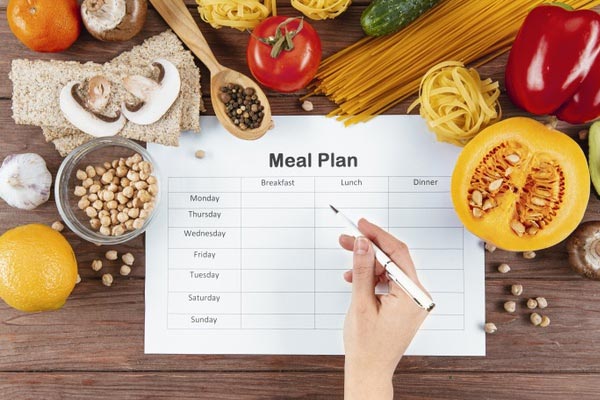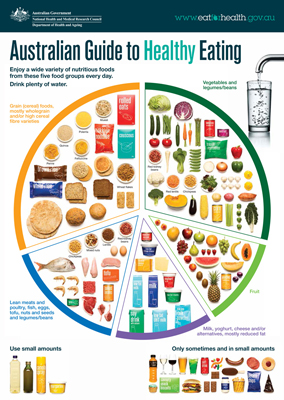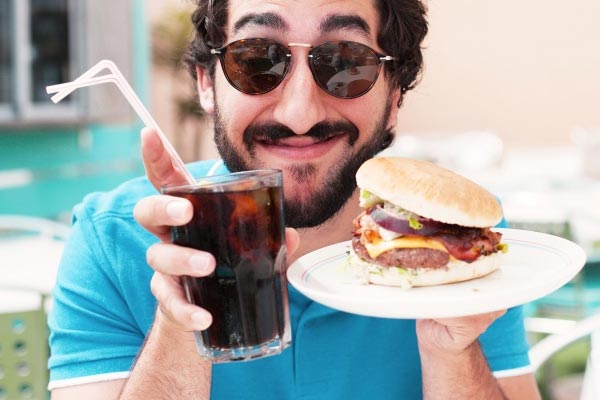So how do fat loss diets really work?
Dieting for fat loss is straight forward. We can boil it down to our daily energy balance – energy in (consumption) versus energy out (expenditure). So why then can dieting be so damn challenging? The reason is also simple, we all live very different lives, with different needs, preferences, likes, dislikes, social environments etc.
Many of the popular diets fail to address individual needs and preferences, and in time become impractical as they impact (negative) our day to day lives too much. The basic premise that each diet operates by is energy in vs out. Diets like intermittent fasting, keto, IIFYM or vegan work by efficiently reducing the number of calories you can intake through various mechanisms such as restricting your food options, or amounts.
Why do diets fail so often?
As mentioned earlier, diets often fail due to an inability to continue to meet the requirements of the diet protocol. We do our best to stick to it, but the compromises required to adhere to the plan come at other costs that we aren’t willing to make.
The rigidity and unrealistic nature of such diets often results in feelings of demotivation and frustration. We can’t stick to the diet because if we did it would cost us more than we care to give up. It’s a lose-lose. Frustrated, angry and with motivation dwindling we end the diet no nearer to our fat-loss goal.
I’m here to show you that it doesn’t have to be this way.
A simple, sustainable and successful approach to dieting
We don’t need to overcomplicate your diet, and you don’t need to overhaul your life in order to be successful in changing your body composition.
For long term success in dietary interventions simplicity is key – being something that is easy for you to understand and is plain or uncomplicated in design. The simplest diet with the fewest changes will be to take your current diet and make small and meaningful improvements that will allow you to sustainably and effectively control your calorie intake.
With this in mind, we will propose a framework for you to build a simple diet for you. Building on your current typical eating habits, behaviours, needs and preferences, to make small and meaningful changes to improve your chances of sustained fat loss success.

Create a diet that is sustainable for you. One that fuels you to be active and is easy to stick to.
The big rocks of successful diets
Create a diet you can adhere to
We have all heard the statistic “95% of diets fail”. Whether entirely true or not, it makes question why. Adherence is by far the biggest player for long term diet success (presuming we have energy balance sorted).
If you are unable to adhere to your diet long term, sustained fat loss becomes nearly impossible. Dietary restraint moves on a continuum from flexibility – rigidity. We need to work out the right balance of flexibility and rigidity that works for your needs.
It is important that you critically evaluate what you can reasonably adhere to before making any changes to your diet or lifestyle. This includes considering what your individual needs, preferences, lifestyle requirements are, and what this looks like in practice.
For example, if part of your job involves client dinners, avoiding eating out entirely may come at the cost of your career. A strict diet with no allowance for eating out is unreasonable and unrealistic and will be short lived. Therefore, planning eating around and factoring in these events will be our best option to prioritise adherence.

Being prepared is the number one diet tip out there. Have healthy foods on hand, meals prepared and don’t leave the house hungry without a plan on what you’re going to eat next.
Preparation & planning is key to dieting success
Think of Benjamin Franklin’s poignant sentiment, “If you fail to plan, you are planning for failure”.
No matter what your intervention is, adherence will be made all the more difficult if you fail to plan ahead and prepare. Being well prepared is vital in implementing a successful diet. Doing so is a sure-fire way to facilitate success and will make actioning your diet a lot easier.
Let’s cover some common planning questions
“What time should I eat?” and “How many meals should I eat?”
When it comes to meal timing and frequency, there is no hard and fast rule for fat loss. As you know, for long term success, adherence is key.
With this in mind, think about what a typical day eating for you looks like in terms of meal frequency (how many times you are eating) and timing (what time you will eat each meal). Eating as many or few meals as you like, and at times that suit your schedule and needs will allow you to adhere over time and be less disruptive to your ordinary daily needs.
For more nuanced information regarding meal timing and frequency check out this great article by Danny Lennon.
“What should I eat?” – Meal Composition (Macronutrients and micronutrients)
Now that we know how many meals we are planning to eat; we can address meal composition to ensure we are hitting any nutritional targets, be it calories or macros. A great starting point is to eat from a well-balanced and varied source of foods. Recall the food group pyramid from primary school? (See the new and improved guide below if not!)
Our glorious meat wagons are fantastic organisms, but they have needs. Constructing meals from the various food groups will facilitate variety and moderation in your diet is will be a great way to ensure daily requirements of macro- and micro-nutrients are being met.
In instances where we consider cutting out whole food groups, we run the risk of creating deficiencies or deficits in various macro- or micro-nutrients. For example, a common issue vegan or vegetarians face is iron deficiency, and in such cases, iron supplementation may be necessary to maintain health markers.
Our dieting toolbox
By now you should have a basic framework and plan for your diet. Having considered your needs, limitations and preferences, how many times and at what time you can or will eat per day, what your meals will look like.
Without further ado, here comes the fun stuff. Ways to reduce calorie consumption that work for you. These will be the tools in our arsenal that can be readily implemented to make meaningful changes to your diet to facilitate fat loss and long-term success.
Focus on return on investment. We want changes that are easy and have minimal impact our lives yet yield a large return from a dietary standpoint.
Dieting substitutions and semi-sacrifices
Substituting or swapping out one food for another is an easy way to reduce consumption.
For example, a client (this is real) of mine once came in wanting to lose body fat. He was drinking several litres of full sugar soft drink each day. We substituted that for the zero-sugar alternative, and he was losing weight in no time. (This is an extreme example)
We can restrict our intake, but here I urge you to exercise caution. You don’t need to give up all the foods and drinks you like, but instead focus on small or semi-sacrifices. Where we aim to reduce consumption without needing to give the thing up completely.
For example, every Friday is burger night with your friends. This normally means a big old dirty burger, a large fries and a calorie laden milkshake with the works. Instead of being a hermit and skipping the occasion, why not just pull back your meal selection? A somewhat semi-sacrifice. Have the burger and skip the chips and swap the drink to a lower or no calorie alternative. This way you have cut out a few hundred calories from the chips and the shake, whilst still having the benefit of socialising and eating the burger. Win-win.
Making these small sacrifices across all or most meals consistently over time will yield a very large impact down the track. This is the compound effect in operation.
An easy way to cut out excess calories is by making smart choices such as still enjoying burger night with friends but opting for a Coke No Sugar over a milkshake.
Set guidelines and rules for eating out
If you find you eat out several times per week, chances are you are consuming more calories than you realise at each outing. Instead of giving up eating out completely, set some rules and guidelines for eating out.
For instance, you can set a limit on the number of times you eat out per week. This is a great way to regain control over your diet, as it makes you more aware and deliberate in when you decide you will eat out. Avoiding eating out all together is likely unsustainable but eating out once per week seems a lot more manageable and reinstates sustainability which will allow you to adhere longer term.
Another great approach for eating is being selective and intentional in determining where you eat out. Selecting restaurants that have “better” options that are more nutritious, and in line with your goals. You might opt for a steakhouse or a restaurant where you can customise your own salad or sandwich. Anywhere that you can skew the outing in your favour is a great idea!
Meal selection to suit your fat loss goals. A general rule of thumb here is to aim for meals containing ingredients, or ingredients that can be readily identified by eye. Think of a steak with veg/salad and chips, we can clearly see what the ingredients are and there is minimal guesswork. Compare that to a risotto where it is a lot harder to guestimate the ingredients and quantities, which means you could risk consuming more calories than you bargained for!
Skip the entrée’s or desert. If you are someone who typically orders an entrée (or two) and then a main, skipping the entrée can be a great way to reduce calories without having to give up you’re the meal out and socialising!
Take control of your environment
Where possible, control your environment to set yourself up for dietary success. Where possible, change and influence your surroundings in a way that will reduce negative influences or triggers, and facilitate positive behaviours and support your goals.
Try increasing the barrier to access or entry. Put foods you typically overeat on or want to minimise consumption of in hard to reach places, or don’t buy them at all. This will mean access is harder, and those instances where you may be triggered or wanting to eat it, it won’t be there or is harder to get to. This may prevent you from taking a backstep on your diet, and help you get closer to your long-term goals and success.
Don’t shop when you’re hungry and stick to your grocery list. This is simple yet effective and is a sure-fire way to control your environment at home. This is planning ahead in action. Write down the foods that you need, and ensure they work with the big picture of your goals and life, then all you have to do is stick to it when you shop.
Each of these strategies will contribute to your ability to sustain your diet and facilitate long term dietary success.
Control your environment wherever possible. Eat before going grocery shopping and never head to a party or gathering starving as it’s easier to succumb to temptation.
Always have a backup plan for meals
As the adage goes, “the best laid plans of mice and men often go awry.” If things don’t work out, it is important to have a backup plan. Life doesn’t always go as we intend, and when this happens (and it will!) we want to be prepared as best as possible.
Have a plan B and C etc ready to go when things go off course with your diet plans. This is how you will succeed and sustain fat loss in the long run. Instead of giving up, make the best of a bad situation.
How many times have you forgotten to pack your lunch at work? Or you forgot to buy something at the shops? It happens, you are only human. Acknowledging that these mistakes and hiccups do occur is step one, and having a backup is step two. If you forget your lunch, know what you will do. If you forget an ingredient and can’t make the meal you planned, have an alternative that you can make ready and waiting in the wings.
Track, measure and weigh your foods
Nutrition tracking or measuring is arguably one of the most popularly utilised methods of exacting control over your diet. Like most things, there are several ways to approach tracking and measuring. Here are some tried and true methods that you can utilise to gain a more accurate picture of your diet:
Food Diary – Written or visual food diaries can be extremely effective in making you more aware of what you are eating and drinking on a daily basis. They can increase accountability and aid you by giving you a record of what you eat, that you can inform decision making on.
Tracking Calories or Macros – These methods have a higher presumed knowledge of the basics of nutrition and are slightly more in-depth than our food diaries. This assesses the consumption of energy, by focusing on either calories or macronutrients. We won’t go into more here, but you can give it a try using one any of the easy to use apps available, such as MyFitnessPal.
Weighing & Measuring – This approach functions by standardising the portions of the foods you eat. If you are consistently measuring and weighing the foods you eat, then you can manipulate the portion sizes to fit your goals and needs.
Meal plans – can be an easy way to track your total daily intake and involves less tracking and potentially less “Food Tetris” as you don’t have to try and fit your intake into your macro targets day by day. A decrease in food variation can lead to more satiety and less food focus, provided there is adequate room for flexibility built into your meal plan (i.e. 1 meal out per week).
Keep your portion sizes in check by weighing your foods. This can really open your eyes to have many calories or particular macronutrients are in a specific food.
Don’t forget about alcohol & liquid calories
Liquid calories have a low impact on our satiety, and hence it is wiser to minimize their consumption during periods of caloric restriction. With so many low-calorie alternatives on the market, substitutions can really go a long way to help manage your caloric intake.
While alcohol may seem void of macronutrients, it is often forgotten that alcohol contains 7kcal/gram and thus can play a sizeable contribution to our daily intake if not planned for and taken into consideration. Some alcoholic beverages also contain more calories than others, especially when they are mixed with a substance with a higher concentration of calories (Think beer and cider). Also, worth noting is how there seems to be a strong correlation between the amount of alcohol consumed and the amount of mindless snacking done.
This being the case, minimising or avoiding drinking calories and prioritising eating our calories is a great way to increase satiety and sustain a diet.
Seek help and guidance if you need it
Last but not least, you can always reach out to a professional for help and guidance. A coach or dietician can be extremely useful in providing a greater motivation and level of accountability, whilst also providing direction, advice and assisting you throughout the process of fat loss, or any other dietary or fitness related goal.
Great coaches and practitioners are out there, and they have the knowledge, skills, expertise and most importantly experience that you are seeking. It may be a larger investment, but chances are it will prove to be worthwhile in the long run. A good coach or practitioner will educate you and teach you so that you do not need them long term. This is extremely empowering and well worth the investment. When you are ready, you will hopefully be well equipped to continue to progress and achieve results on your own.
Learning how to control your diet takes time and persistence
Like becoming a Jedi master, learning to control your diet and manipulate your body composition takes time, effort and persistence. Hopefully, now you realise that you don’t need to completely overhaul your life and diet in order to succeed.
Each of the strategies discussed above are tools in our dieting toolbox. Not every tool will fit every problem we face in dieting for fat loss but knowing that you have options and different tools available will allow you to choose the best fit and continue to progress towards your goal. No matter what life throws your way.
Be open and willing to continually learn and grow throughout the process. Embrace the challenges you face and the setbacks. They will prove valuable experiences and will provide an opportunity for you to learn.
Sustainable fat loss takes time. Strive for progress and not perfection and continue to put the work in each day. Lastly, be patient. It takes time. Focus on daily improvements, and don’t quit. Instead, if the results aren’t happening, make a change and keep working.










